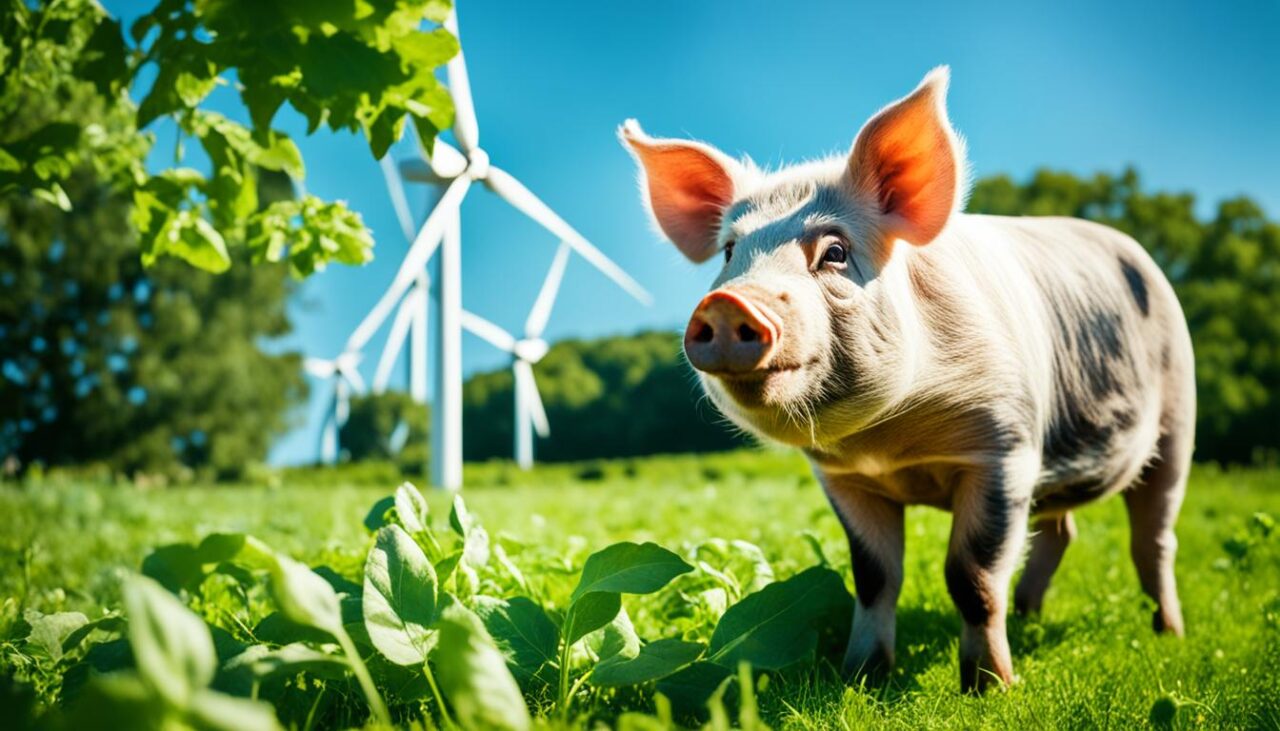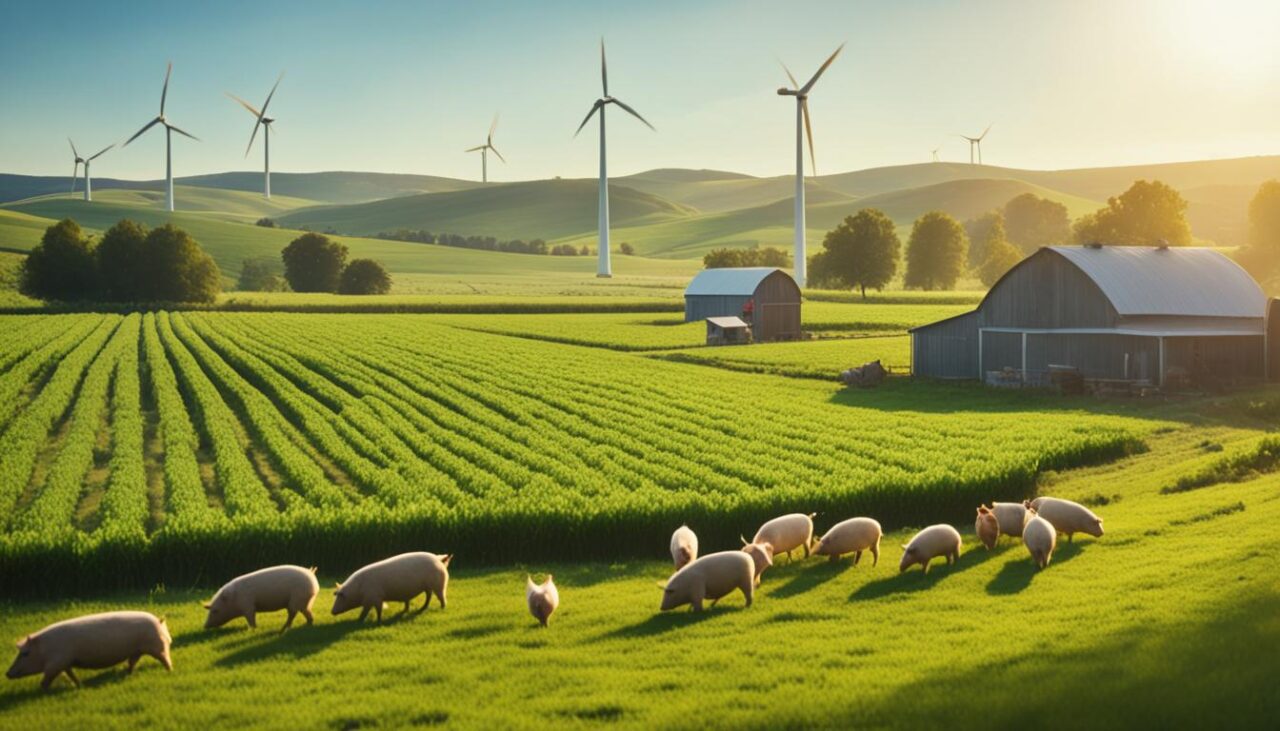Sustainable agriculture is a farming practice that supports the environment, public health, and animal welfare while promoting economic viability for farmers. One way to achieve sustainable agriculture is to integrate livestock, such as pigs, into farming practices.
By incorporating pigs and other animals into sustainable farming systems, farmers can reduce their reliance on chemical inputs, improve soil fertility, and enhance crop yields. Through this approach, we can move towards more eco-friendly and environmentally sustainable farming practices.
In this article, we will discuss the benefits and innovative techniques of integrating pigs and other animals into sustainable agriculture to promote farm sustainability, agricultural innovation, and environmental farming.
Key Takeaways
- Sustainable agriculture is a farming practice that supports the environment, public health, and animal welfare while promoting economic viability for farmers.
- Integrating pigs and other animals into sustainable farming systems can reduce reliance on chemical inputs, improve soil fertility, and enhance crop yields.
- By embracing sustainable agriculture practices that incorporate the integration of livestock, we can move towards more eco-friendly and environmentally sustainable farming practices.
- Rotational grazing, agroforestry, and the use of cover crops are innovative techniques that farmers can adopt to effectively integrate pigs and other animals into sustainable farming systems.
- Integrating livestock into sustainable farming practices can have positive impacts on farm sustainability, agricultural innovation, and overall farm productivity.
The Benefits of Livestock Integration in Sustainable Agriculture
Integrating livestock into sustainable agricultural practices can result in a multitude of benefits that not only contribute to eco-friendly farming but also promote agricultural innovation. By incorporating pigs and other livestock into the farming system, farmers can enjoy more substantial crop yields and a reduced reliance on chemical inputs.
Improves Soil Fertility
Livestock play a vital role in enhancing soil fertility by providing essential nutrients to the soil through their manure and urine. These nutrients include nitrogen, phosphorus, and potassium, which aid in plant growth and development. Additionally, when livestock graze in a particular area, they trample the soil, breaking down organic matter and promoting soil aeration, leading to improved soil health.
Controls Pests and Weeds
Livestock integration in sustainable agriculture also helps control pests and weeds, reducing the need for chemical pesticides. Livestock can eat weeds and crop residues, reducing the amount of organic matter that could lead to pest and disease issues. They can also trample pests that could potentially destroy crops, significantly reducing crop damage.
Enhances Nutrient Cycling
Integrating livestock into sustainable farming practices can enhance nutrient cycling by balancing the carbon and nitrogen inputs into the soil. Livestock helps recycle nutrients, reducing nutrient loads in the soil. This results in a natural process that contributes to the bio-geochemical cycles and subsequently leads to sustainable agriculture practices.
By integrating livestock into sustainable agriculture, farmers can enjoy improved yields, reduced dependency on chemical inputs, and a healthier environment. Livestock integration is an essential aspect of agricultural innovation, and it is eco-friendly farming practices that support environmental farming.

Innovative Techniques for Integrating Livestock in Sustainable Farming
Integrating livestock into sustainable farming practices can be achieved through innovative techniques that enhance farm sustainability while minimizing environmental impact. One such technique is rotational grazing, which involves dividing pastures into smaller areas or paddocks and rotating livestock from one paddock to another. This technique helps to maintain soil health, reduces erosion, and improves pasture productivity.
Another technique is agroforestry, which combines trees with crops or pasture. Agroforestry systems can provide multiple benefits, such as reducing erosion, enhancing soil fertility, and increasing biodiversity. The use of cover crops is also a popular technique in sustainable farming. Cover crops help to control soil erosion, minimize weed growth, and add nutrients to the soil, while also providing livestock with additional forage.

Other innovative practices that farmers can adopt include silvopasture, which combines trees, pasture, and livestock, and conservation tillage, which minimizes soil disturbance while maintaining soil health. By embracing these innovative techniques and practices, farmers can successfully integrate livestock into their sustainable farming systems, leading to improved farm sustainability and reduced environmental impact.
Conclusion
In summary, integrating pigs and other livestock into sustainable farming practices can lead to a more eco-friendly and sustainable approach to agriculture. By using innovative techniques such as rotational grazing, agroforestry, and cover crops, farmers can boost soil health, reduce reliance on chemical inputs, and enhance overall farm sustainability.
As consumers increasingly demand environmentally friendly products and practices, it is essential that the agricultural industry strives to meet these demands. By embracing sustainable agriculture, farmers can reduce their environmental impact, improve their bottom line, and contribute to a more sustainable future for generations to come.
It is clear that agricultural innovation and farm sustainability go hand in hand. By integrating pigs and other livestock into their farming practices, farmers can take a significant step towards achieving these goals. Let us work together towards a future of sustainable agriculture and eco-friendly farming practices that benefit both the environment and the agricultural industry.







